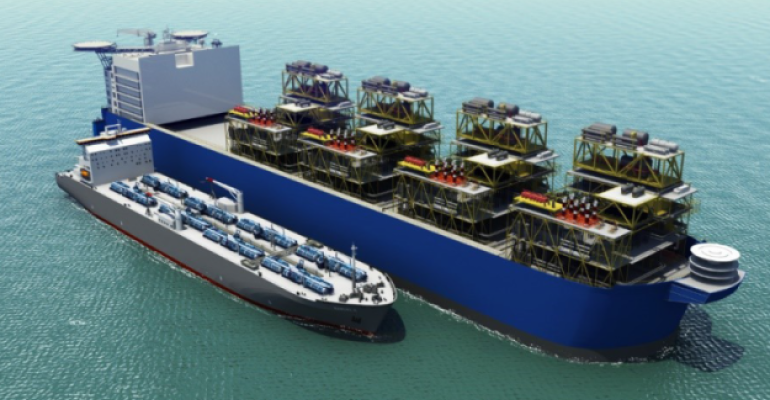“Our concept design is for an offshore facility partnering advanced nuclear power with an offshore ammonia production facility, which will create green ammonia from abundant seawater and air. No emissions would come from the plant,” said Dr Rory Megginson, Core Power's Director of Analytics.
The facilities would use atomic power to desalinate saltwater, use electrolysis to create hydrogen and oxygen, capture nitrogen from the air and then combine the elements into ammonia using the Haber Bosch Process.
The company said that while the largest 17,000 ships may not find economic value in hydrogen-derived green fuels, that still leaves a significant portion of the world fleet that could benefit from using green ammonia.
In a report titled “The New Alchemy: Affordable green fuel from water and air – Floating advanced atomic production of green ammonia for shipping”, Core Power laid out its concept of combining marinised atomic power and a power conversion system on one offshore platform, close to an offshore ammonia production and storage facility.
Using next generation molten salt reactors, Core Power said its approach would exceed the safety and efficiency of existing reactors.
“Core Power modelling shows that with current technology it is possible to produce one million tonnes of ammonia per year using 1.2 GW of electric power, on each floating production platform, reducing to 0.9 GW by 2050. This is the equivalent of 440,000 tonnes of very low sulphur fuel oil (VLFSO) and it would allow the decarbonisation of a considerable number of vessels,” the company said.
Core Power pitched its solution as superior to renewable energy, which lacks the scale and reliability for widespread ammonia production. Its proposed setup also allows for flexibility in the output mixture of electricity, hydrogen and ammonia, opening up use for other industrial applications.
Having reactors at sea saves costly civil engineering, said Core Power, replacing the need to create custom nuclear plants for a site with a more repeatable approach to nuclear power plant building. The company also plans to lean on the expertise of shipyards and the offshore oil and gas sector.
“Moving to shipyard construction will allow even further reduction in costs. By reducing the size of the reactor and moving the reactor construction to specific factories, it will be possible to implement modular manufacturing methods including the increased use of automation as well simplification of the logistics of the reactor components supply chain,” said Core Power.
Copyright © 2024. All rights reserved. Seatrade, a trading name of Informa Markets (UK) Limited.
Add Seatrade Maritime News to your Google News feed.  |

